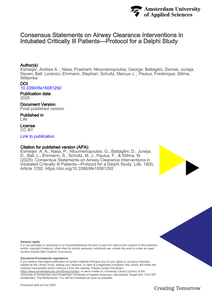Abstract Aims: Medical case vignettes play a crucial role in medical education, yet they often fail to authentically represent diverse patients. Moreover, these vignettes tend to oversimplify the complex relationship between patient characteristics and medical conditions, leading to biased and potentially harmful perspectives among students. Displaying aspects of patient diversity, such as ethnicity, in written cases proves challenging. Additionally, creating these cases places a significant burden on teachers in terms of labour and time. Our objective is to explore the potential of artificial intelligence (AI)-assisted computer-generated clinical cases to expedite case creation and enhance diversity, along with AI-generated patient photographs for more lifelike portrayal. Methods: In this study, we employed ChatGPT (OpenAI, GPT 3.5) to develop diverse and inclusive medical case vignettes. We evaluated various approaches and identified a set of eight consecutive prompts that can be readily customized to accommodate local contexts and specific assignments. To enhance visual representation, we utilized Adobe Firefly beta for image generation. Results: Using the described prompts, we consistently generated cases for various assignments, producing sets of 30 cases at a time. We ensured the inclusion of mandatory checks and formatting, completing the process within approximately 60 min per set. Conclusions: Our approach significantly accelerated case creation and improved diversity, although prioritizing maximum diversity compromised representativeness to some extent. While the optimized prompts are easily reusable, the process itself demands computer skills not all educators possess. To address this, we aim to share all created patients as open educational resources, empowering educators to create cases independently.
DOCUMENT

BACKGROUND:Endotracheal suctioning causes discomfort, is associated with adverse effects, and is resource-demanding. An artificial secretion removal method, known as an automated cough, has been developed, which applies rapid, automated deflation, and inflation of the endotracheal tube cuff during the inspiratory phase of mechanical ventilation. This method has been evaluated in the hands of researchers but not when used by attending nurses. The aim of this study was to explore the efficacy of the method over the course of patient management as part of routine care.METHODS:This prospective, longitudinal, interventional study recruited 28 subjects who were intubated and mechanically ventilated. For a maximum of 7 d and on clinical need for endotracheal suctioning, the automatic cough procedure was applied. The subjects were placed in a pressure-regulated ventilation mode with elevated inspiratory pressure, and automated cuff deflation and inflation were performed 3 times, with this repeated if deemed necessary. Success was determined by resolution of the clinical need for suctioning as determined by the attending nurse. Adverse effects were recorded.RESULTS:A total of 84 procedures were performed. In 54% of the subjects, the artificial cough procedure was successful on > 70% of occasions, with 56% of all procedures considered successful. Ninety percent of all the procedures were performed in subjects who were spontaneously breathing and on pressure-support ventilation with peak inspiratory pressures of 20 cm H2O. Rates of adverse events were similar to those seen in the application of endotracheal suctioning.CONCLUSIONS:This study solely evaluated the efficacy of an automated artificial cough procedure, which illustrated the potential for reducing the need for endotracheal suctioning when applied by attending nurses in routine care.
DOCUMENT
Intubated critically ill patients are susceptible to secretion accumulation because of compromised airway clearance. Various airway clearance interventions are employed to prevent complications arising from mucus retention. This Delphi study aims to collect global opinions in an international expert panel of ICU professionals on the usefulness of these various airway clearance interventions. A steering committee performed a literature search informing the formulation of statements. Statements are grouped into two distinct parts: (1) Humidification and Nebulization, and (2) Suctioning and Mucus mobilization techniques. For each part, a diverse panel of 30–40 experts will be selected, with concerted effort to involve experts from various medical specialties involved in airway clearance methods. Multiple choice questions (MCQs) or 7-point Likert-scale statements will be used in the iterative Delphi rounds to reach consensus on various airway clearance interventions. Rounds will continue until stability is achieved for all statements. Consensus will be deemed achieved when a choice in MCQs or a Likert-scale statement achieves ≥75% agreement or disagreement. Starting from the second round of the Delphi process, stability will be assessed using non-parametric χ2 tests or Kruskal–Wallis tests. Stability will be defined by a p-value of ≥0.05.
DOCUMENT
